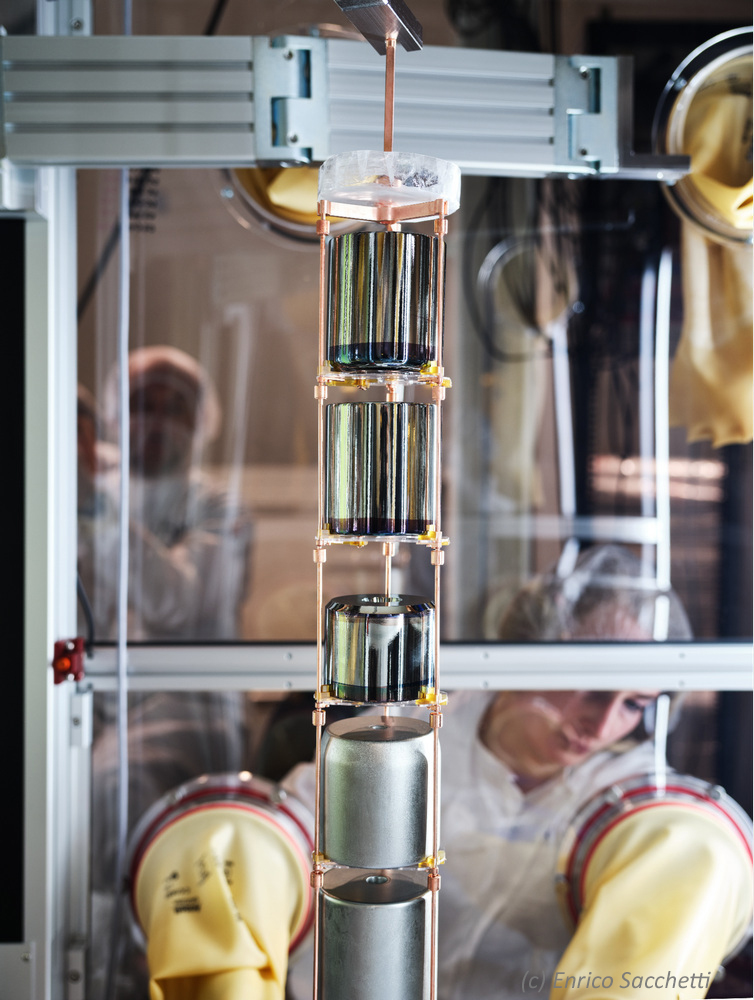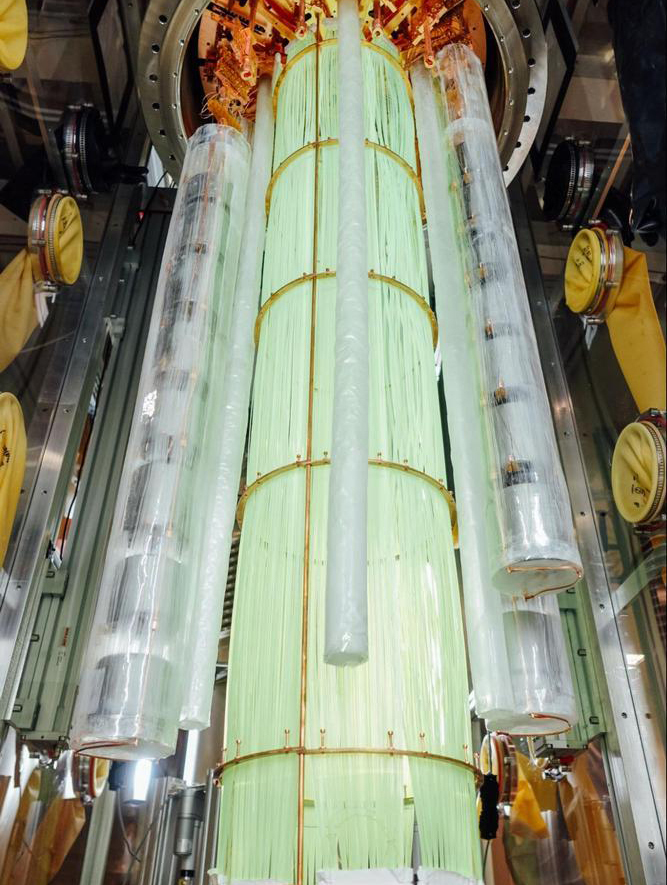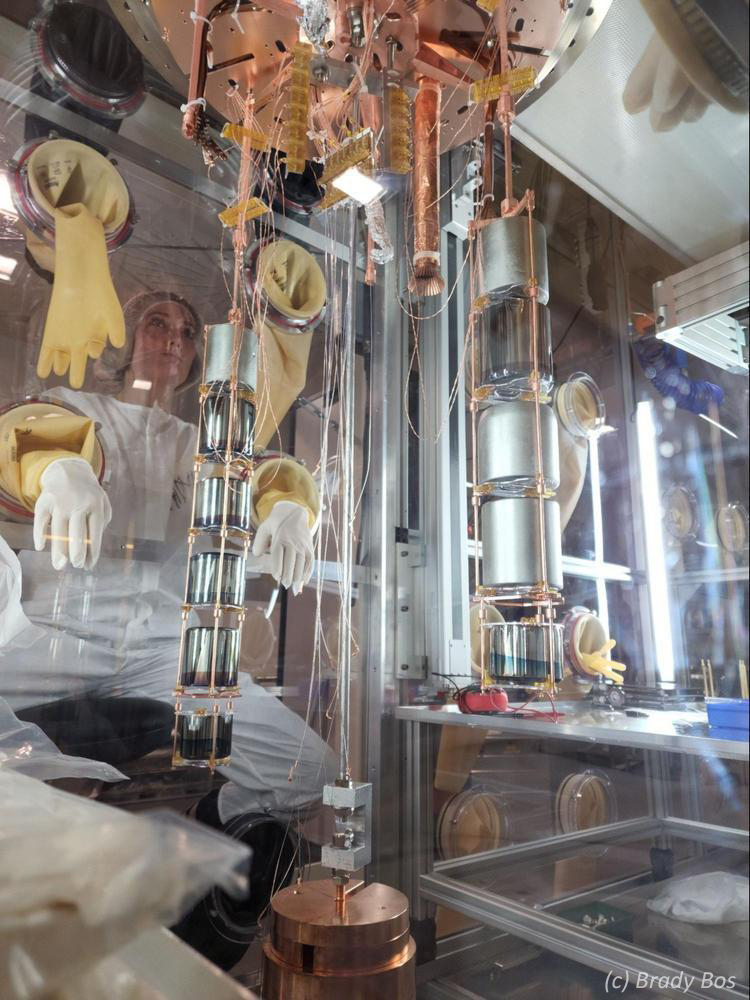Commissioning of LEGEND experiment at Gran Sasso Laboratory
News, 01 July 2022
Staff members of the Laboratory of Nuclear Problems JINR have made a decisive contribution to the installation of the first 60 kg of detectors of enriched 76Ge at the LEGEND setup created to search for the 76Ge neutrinoless double (0νββ) beta decay. DLNP JINR specialists have also fabricated high-purity nylon mini-shrouds used to reduce the radioactive background of the experiment. For the first time specialists have installed the complete liquid argon instrumentation, developed and created by a joint team of scientists from JINR and the Technical University of Munich. The LEGEND collaboration members from JINR Konstantin Gusev, Daniya Zinatulina, Alexey Lubashevskiy, Nadezhda Rumyantseva, and Egor Shevchik have participated directly in the work.
The new generation experiment LEGEND (Large Enriched Germanium Experiment for Neutrinoless double beta Decay), which is the successor of the GERDA and Majorana projects, is designed for searching for 76Ge neutrinoless double (0νββ) beta decay. Neutrinoless double beta decay is a hypothetical process that goes beyond the Standard Model of particle physics. Its discovery would have serious consequences for elementary particle physics and cosmology: the possibility of violation of the lepton number would be demonstrated and the Majorana nature of neutrinos (that is, the identity of neutrinos and antineutrinos) would be proved, the question of the hierarchy of neutrino masses would be answered. Moreover, it would provide an important key to understanding why there is much more matter than antimatter in the Universe.
After a rather long preparatory phase, the LEGEND experiment moved on to the final stage — the installation of the first batch of detectors and a liquid argon instrumentation. The collaboration decided first to assemble 4 out of 12 planned strings of detectors (the total mass of 76Ge is about 60 kg) in order to test all components of the experimental setup. It is noteworthy that final materials were used during the installation. This will allow assessing the real background level after collecting data for several months. Even now, the mass of detectors exceeds the total mass of detectors in the predecessor GERDA experiment by more than 50%. At the end of this stage, the assembling of all available detectors is planned.
To ensure an ultra-low background level of the setup, specialists had to make special nylon mini-shrouds, which would surround the detector strings. The design of the mini-shrouds and their production are one of the responsibilities of the DLNP JINR group in LEGEND. Initially, it was planned to manufacture all mini-shrouds in the clean room at JINR and then send them to Gran Sasso in special hermetic containers also developed by laboratory scientists. However, at present, the delivery of such containers to Gran Sasso is difficult. In this regard, it was decided to create all the mini-shrouds needed for the experiment in the clean room at the Technical University of Munich, with which DLNP JINR specialists have long-term beneficial cooperation within the LEGEND and MONUMENT projects. In May 2022, DLNP JINR successfully delivered finished mini-shrouds to Italy and installed them at the experiment.
In parallel with the mini-shroud production, the second group of scientists from Dubna has been carrying out an experimental work at Gran Sasso. They have mounted and bonded germanium detectors in special low-background holders, and also performed a test assembly of two detector strings.
In addition, with the direct participation of scientists of the Joint Institute, 60 kg of germanium detectors have been successfully assembled into 4 strings. Scientists have put the nylon mini-shrouds on them brought from Munich and installed the liquid argon instrumentation. Now it is time to collect the first experimental data, and then, in the autumn of 2022, DLNP JINR staff members are going to return to Gran Sasso. They will complete the installation of all available detectors and launch the full-scale LEGEND experiment.




